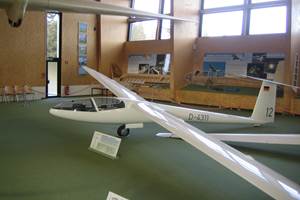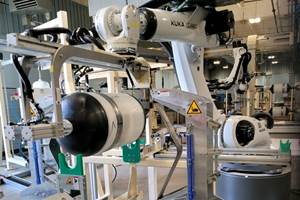Looking for opportunity in a pandemic crisis
How do we determine our next steps in the composites industry amidst a pandemic? Dale Brosius ponders opportunities, risks and changes.

Back in 2008, the world entered the Global Financial Crisis, also known as the Great Recession. Housing prices and stock markets plummeted — the latter by 50% — between May 2008 and March 2009, only returning to the mid-2008 levels in March of 2012. U.S. civilian unemployment soared, rising from around 4% to more than 10% by mid-2010, taking until 2017 to recover. Government stimulus packages were enacted. The U.S. auto industry had to be bailed out for fear it would totally collapse. The marine industry contracted by more than 50% and underwent significant restructuring. The aviation industry, although affected, recovered quickly relative to many other sectors. In general, the recession was widespread and long-lasting.
Fast forward to 2020 and the arrival of the novel coronavirus and its associated disease, COVID-19. In response, factories across countries have been shut down, restaurants have been closed except to carryout orders, airplanes have flown practically empty, borders have been closed and numerous employees have been terminated or furloughed. In the U.S., civilian unemployment jumped from less than 4% in January 2020 to a historical record of 14.7% in April, moderating to 10.2% in July. U.S. economic activity, as measured by gross domestic product, fell 5% in the first quarter of 2020 on an annualized basis, and a whopping 33% in the second quarter.
Despite the significant decline in second-quarter GDP, the S&P 500 closed July 31 within 3% of its Feb. 12 record high. Auto production, while still depressed, has rebounded, and home prices have held steady or risen slightly. And in a clear difference from the late 2000s, recreational vehicle and powerboat sales are up significantly this summer compared to 2019. No doubt the financial stimulus enacted in response to the pandemic is partly responsible, but lifestyle changes are also at play.
Nobody told me there’d be days like this
Strange days indeed
-John Lennon, “Nobody Told Me”
In a world where down is up and up is down, is it possible to know the path forward? It’s clear that until the world has some effective vaccines, and enough of the population is inoculated, the road to recovery will be slowed. With travel restrictions in place, including internationally, the hospitality and commercial aviation industries remain severely depressed, and may take years to recover. While leisure travel is likely to recover fully, there are considerable questions about the future of business travel, given virtual meeting alternatives.
Every crisis creates opportunities, but we have to look for them. For example, the pandemic has been positive for composite material sales to the recreational vehicle and marine industries. Production of wind turbine blades, interrupted early on, have resumed as the desire for, and the costs of, renewable energy continue to be large drivers. And despite the commercial aerospace market taking a big hit from airlines pushing out new aircraft deliveries, the space launch and satellite industry continue apace. While there is anecdotal information that indicates people are moving from cities to suburbs to gain greater social distance, this appears to be just that — anecdotal. Evidence continues to support the idea that young, educated people prefer life in city centers. This bodes well for investment in developing composite solutions for shared ground mobility and urban air mobility, both fueled by battery electric technology. And with sustainability and circular economy gaining traction, now is the time to invest in scaling composite recycling solutions.
There are some risks we need to address in this environment. Developing the future workforce for the composites industry is key to continued success. The composites industry was making good progress on this front until the pandemic interruption. As I write this, there are a myriad number of plans for remote, in-person and hybrid learning for the northern hemisphere’s return-to-school season. Laboratories at leading research universities are starting to reopen, and doing practical, hands-on work is essential to gaining a proper understanding of composites. Finding a way to safely train and retrain will help build the talent pipeline.
Further, we all must get more creative to reach new audiences — the specifiers and users of materials — to sell the advantages of composites without travel and trade shows, particularly in markets with relatively minor penetration. Our trade press, including CompositesWorld, mainly reaches the already converted, not the unconverted. As an example, what happens if future government stimuli include major infrastructure investments? We need to be getting the success stories and the engineering data in front of those specifiers now. By doing so, in that market and others, we will emerge stronger in the long-term.
Related Content
ASCEND program update: Designing next-gen, high-rate auto and aerospace composites
GKN Aerospace, McLaren Automotive and U.K.-based partners share goals and progress aiming at high-rate, Industry 4.0-enabled, sustainable materials and processes.
Read MoreCoriolis Composites installs AFP machine at Sabanci University
C1 robot contributes to technology development at the Integrated Manufacturing Technologies Research and Application Center (SU IMC) in Istanbul.
Read MoreFrom sailplanes to composites repair: Growing composite training opportunities over the years
Mike Hoke discovered his interest in the composites industry at a young age. His journey eventually led him to Abaris Training Resources, which he owned and evolved for more than 30 years.
Read MoreAutomated filament winding system increases throughput, reduces manual labor for pressurized well tank production
For its new line of composite well water tanks, Amtrol worked with Roth Composite Machinery on an automated process for faster, more easily tracked production.
Read MoreRead Next
Seeking inspiration in a virtual environment
In an increasingly digital world, how far can the virtual environment take us? Only so far, Dale Brosius says. At some point, we have to get real.
Read MoreCW’s 2024 Top Shops survey offers new approach to benchmarking
Respondents that complete the survey by April 30, 2024, have the chance to be recognized as an honoree.
Read MoreComposites end markets: Energy (2024)
Composites are used widely in oil/gas, wind and other renewable energy applications. Despite market challenges, growth potential and innovation for composites continue.
Read More


























